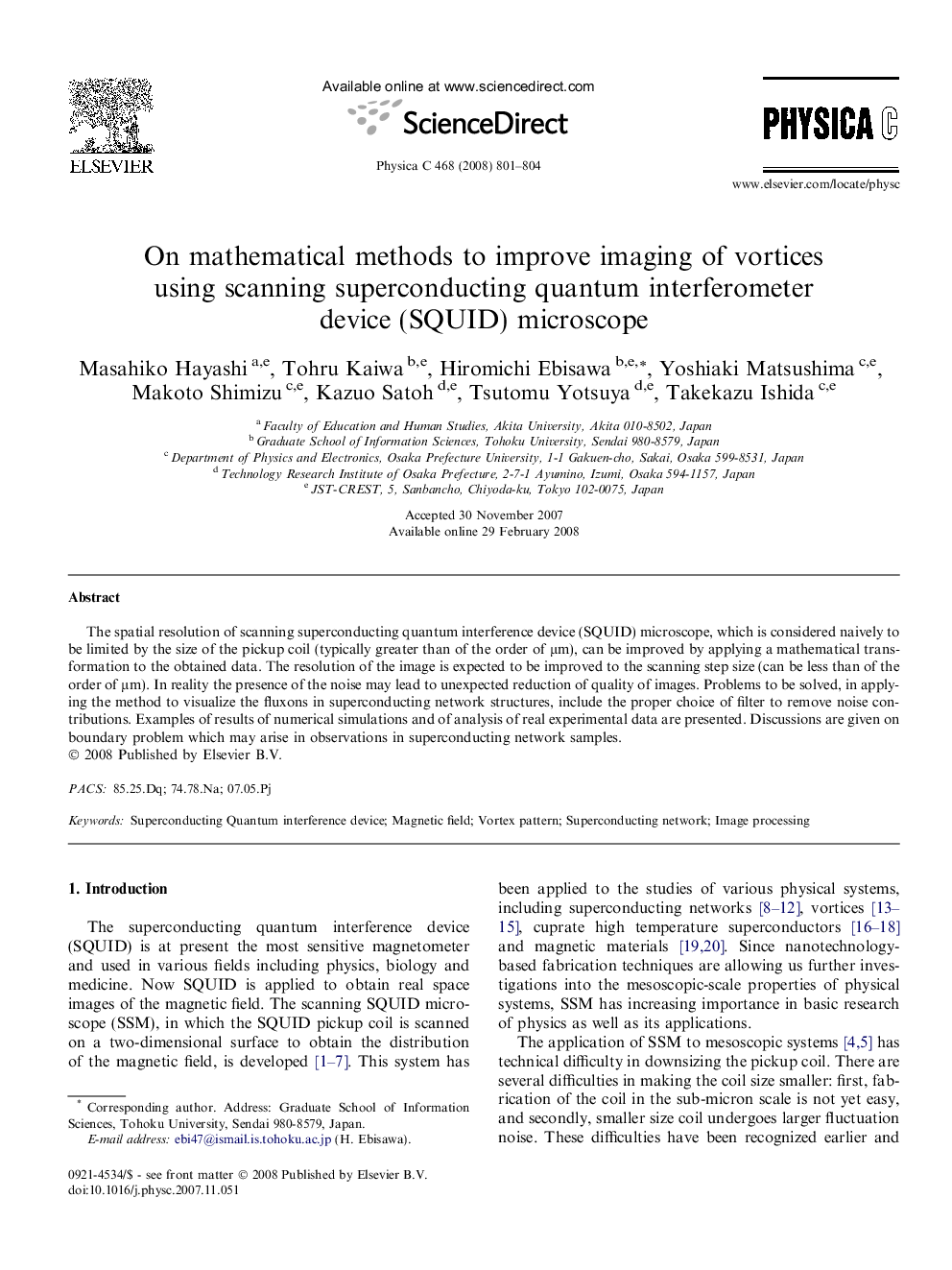| Article ID | Journal | Published Year | Pages | File Type |
|---|---|---|---|---|
| 1820248 | Physica C: Superconductivity and its Applications | 2008 | 4 Pages |
The spatial resolution of scanning superconducting quantum interference device (SQUID) microscope, which is considered naively to be limited by the size of the pickup coil (typically greater than of the order of μm), can be improved by applying a mathematical transformation to the obtained data. The resolution of the image is expected to be improved to the scanning step size (can be less than of the order of μm). In reality the presence of the noise may lead to unexpected reduction of quality of images. Problems to be solved, in applying the method to visualize the fluxons in superconducting network structures, include the proper choice of filter to remove noise contributions. Examples of results of numerical simulations and of analysis of real experimental data are presented. Discussions are given on boundary problem which may arise in observations in superconducting network samples.
